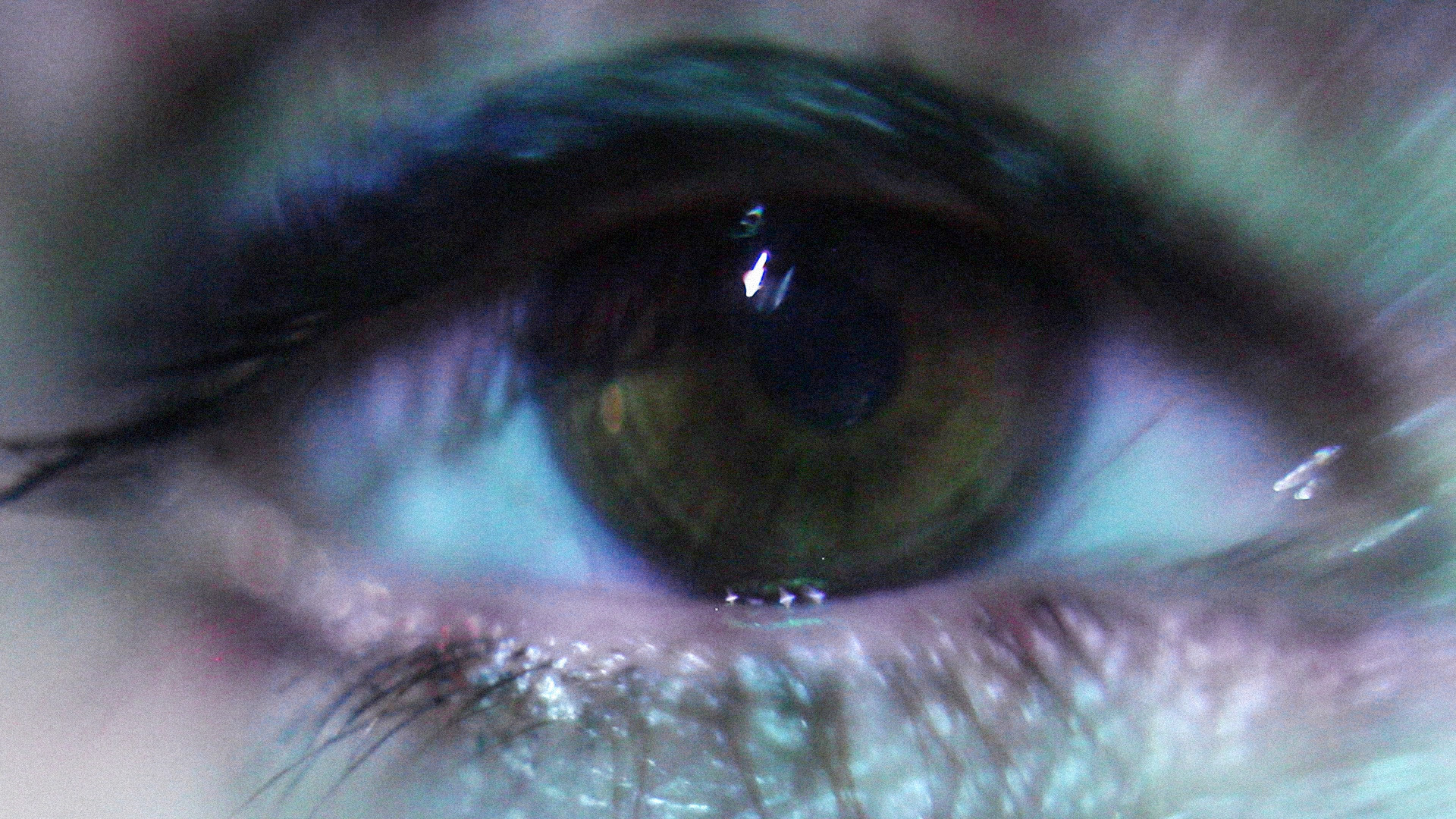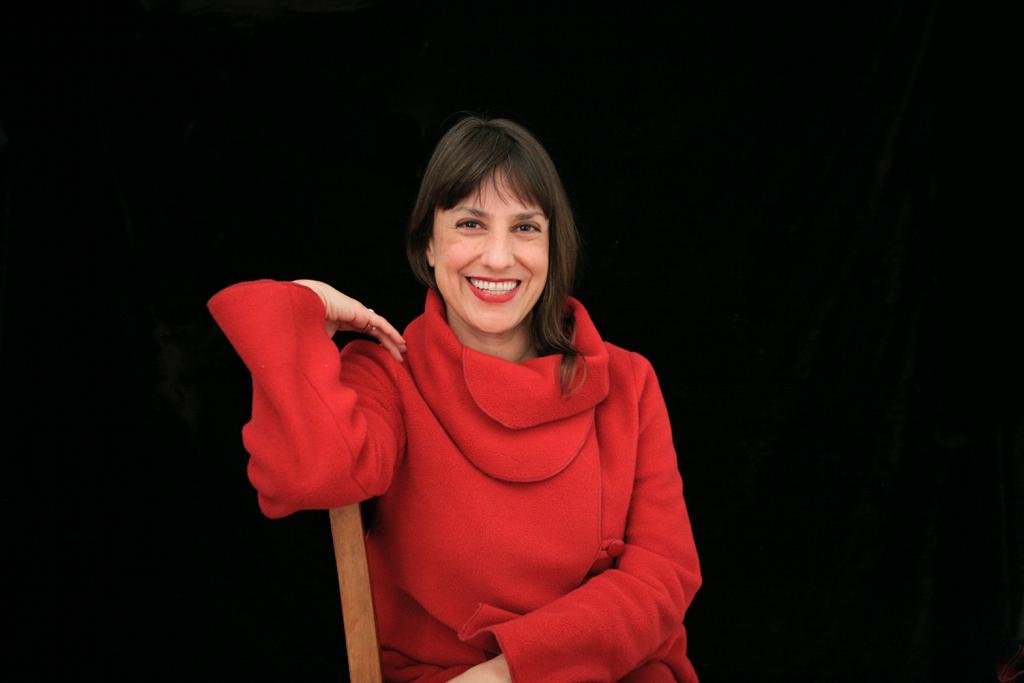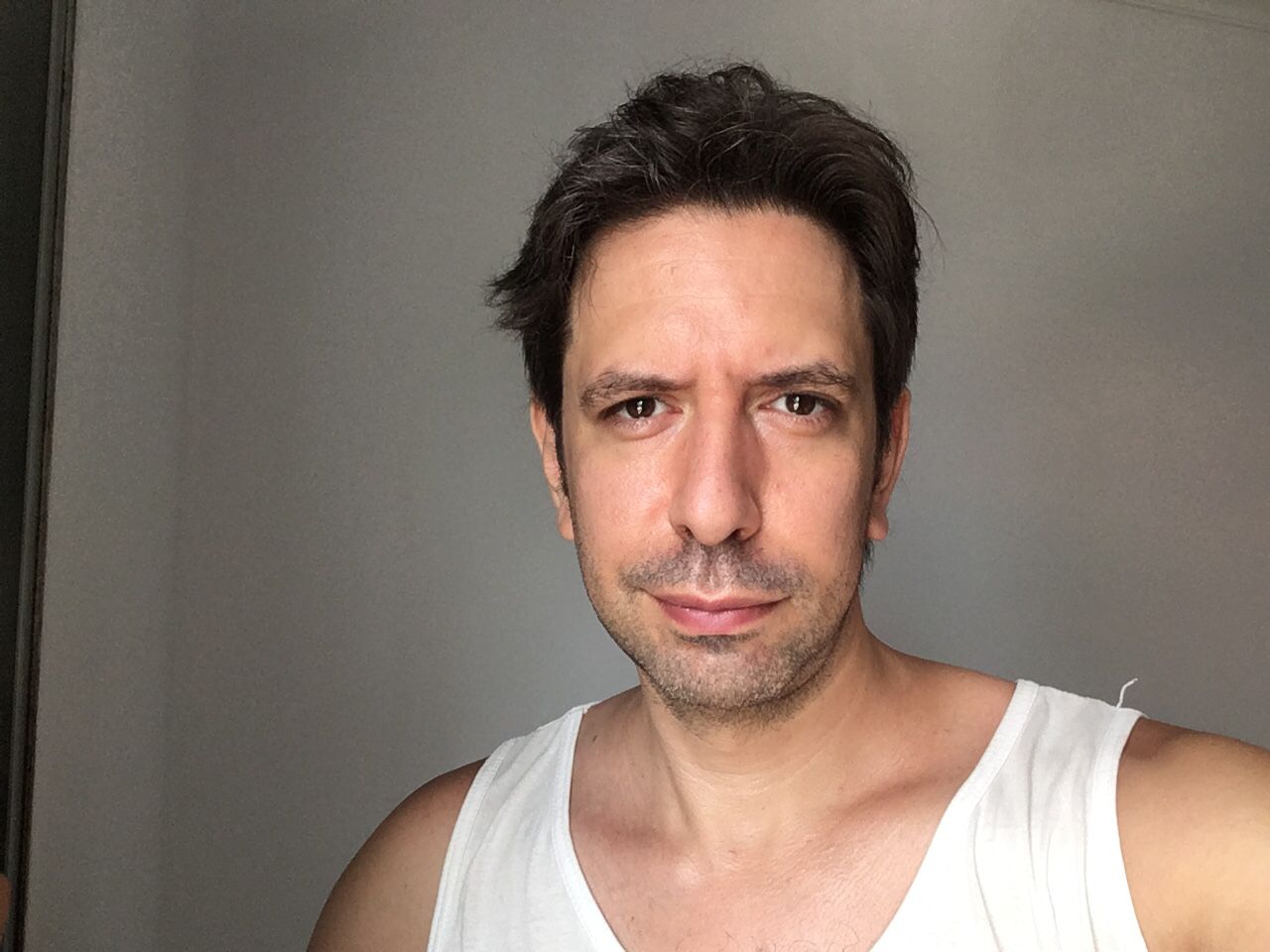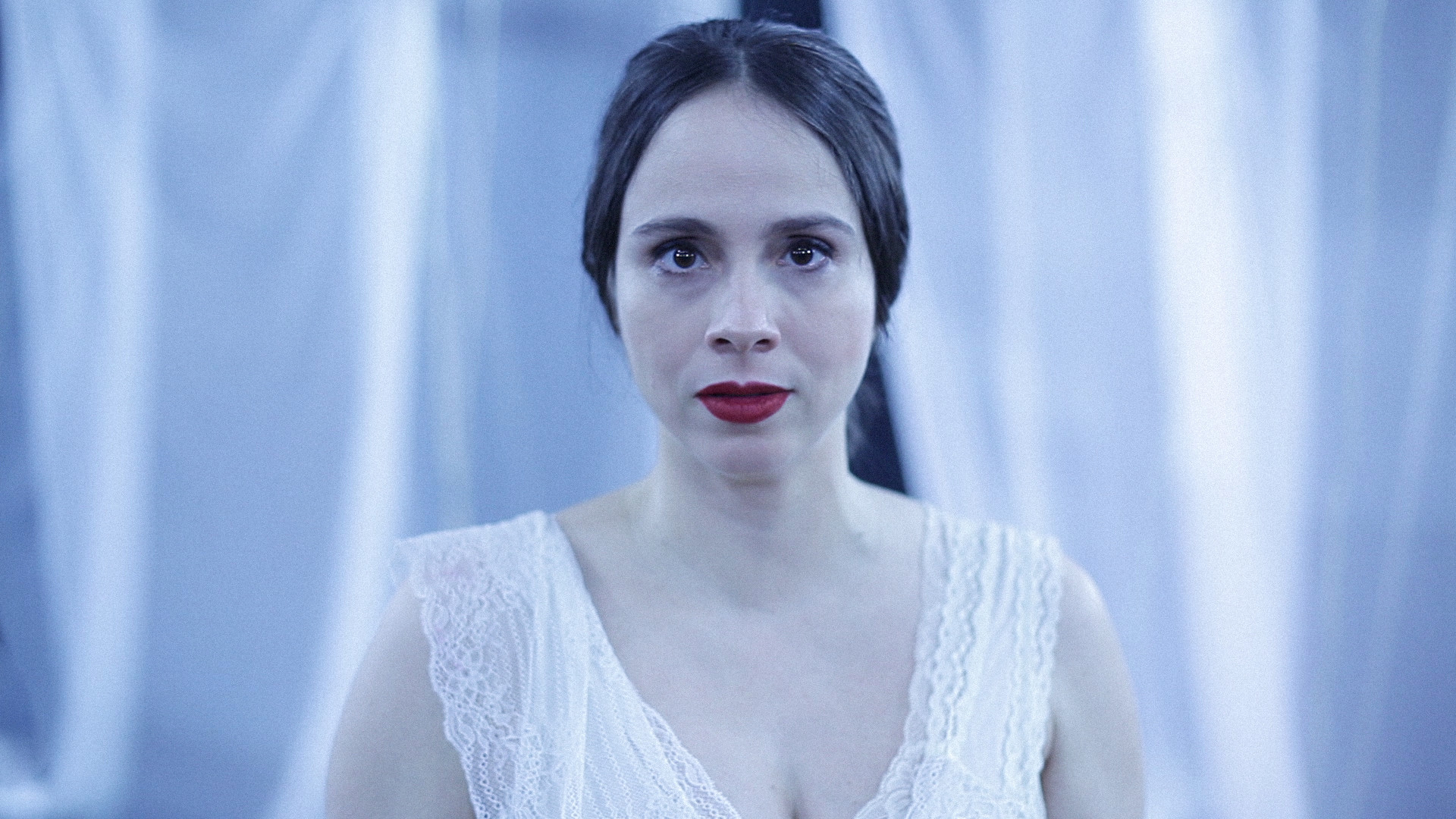Love And The Plague | An Interview With The Creators

Interviewed by Rich Monetti
We interview Marcela Lordy, Pedro Guilherme and Flávia Couto about their fantastic film 'Love and the Plague'. Our first questions are for Marcela Lordy. She has directed 'Love and the Plague'. Marcela is a film director, screenwriter and film producer. A film graduate at FAAP, she studied directing actors at EICTV, in Cuba, and worked with leading authors of Brazilian cinema. Her film production transits between cinema, television, theatre and visual arts.
Cult Critic- In film actors and film crew coming to work under the conditions of Covid and fascism, how did you help channel the uncertainty into performances?
Marcela Lordy - After researching the life and work of Anais Nin and Antoine Artaud during their art residency in France, Flávia and Pedro returned to São Paulo with the idea of putting together a play. Unfortunately, the pandemic interrupted the plans to perform on stage. So they decided to assemble the piece indoors: they filmed each other so as to broadcast it online. I watched it online, and I was blown away by the freedom and creative way in which they used one cell phone and two laptops . The story flowed organically, but they had to act and interact with the camera almost all the time. By the time, they invited me to a debate after one of the online presentations. After that, I was challenged to adapt the play into a movie. Originally, it was a 100-minute play, di-vided into two parts of 50. The first thing I proposed was to work on the script, connecting two parts and cutting the text to make the film 50... 60 minutes long. The second thing was to think of a new space. It had to refer to the same confinement atmosphere, but with more structure adding more depth of field to bring more plasticity and cinematographic language. We thought of a theater without an audience in the middle of a pandemic. From there we set up a team to start a collaborative process of adapting their original idea. Art director Vera Hamburger transits between cinema and theater. She has a research on the space and the elements used in scenography as a function of dramaturgy, called Laboratório Fronteiras Permeáveis: https://www.youtube.com/watch?v=fF6-DPe4fH8. From the cut in the original dramaturgy, to the direction, her collaboration was fundamental. She also thought about the characters' language breaks and transitions between past and present. From the moment a third look at the scene came in, we had to think about each moment of acting according to it. We had to decide together what would be the most potent performance. To cite an example, choosing whether the actors would interact with each other or for the camera. All meetings with the creative team were virtual and we only met in person during the film shooting week. We did three days of rehearsal and three of filming. The entire filmmaking team was tested and we were isolated throughout the process. I love to make film adaptations, it is a pleasant challenge to move among different types of languages. My first short film was born from a play and my first feature film is a free adaptation of a novel by Clarice Lispector, one of the greatest writers in Latin America.
Cult Critic- How does the worsening situation impact the story originally written?
ML - The Covid issue in Brazil was updated in the new script. We invited the journalist João Paulo Charleaux to rewrite documental excerpt of the film. He linked the tragedy of the pandemic in Brazil, in this current disastrous government - a government that flirts with totalitarianism - with Nazism and the plague of the time of Artaud and Anais. The film editor, Gabriela Bernd, did completely new research of images for it, and made an accurate contribution on constructing the final script.
Cult Critic - As the shoot goes from day to day, how do you help the film actors get back emotionally to where they were the day before?
ML - We tried to shoot as much as possible in the order of the script, precisely so as not to interrupt the flow of the performance. We divided the situations into dramatic blocks and made some separate narrative transitions and breaks. As the two film actors had already rehearsed a lot by themselves, the biggest work was to adapt the actions according to the new physical space, intrinsically using the elements proposed by the scenography.
Cult Critic- Since Pedro Guilherme and Flavia Couto also wrote the story and has their own vision as writers, how did that impact your direction of them as actors and how did you use their input to develop the scenes?
ML - I also felt very isolated as an artist during the pandemic. Their feeling of revolt was also mine, and that of the entire filmmaking team. Brazil was one of the countries that most killed its population throughout the pandemic, due to mere neglect and political ignorance. I tried to take the essence of everything that was being said and felt. I tried to potentiate our solitude as creators, through images. We lived a double nightmare in the pandemic: the neglect of science by a government that is accused of genocide, and also insists on boycotting its artists. That's why the film audience without its public appears so strongly in our film, that's why the physical space behind the scenes is part of our history. It was a way of keeping ourselves alive, potent, creative, doing what we know and love the most. As if we ourselves were insistently rebuilding our art, putting an end to oppression, rewriting poetically and politically our history with our hands. 
Our next questions are for the screenwriters Pedro Guilherme and Flávia Couto Cult Critic - How did the stress of isolation give rise to the desire to express these feelings and then this script?
Flávia - The context of isolation was what moved us to make O Amor e a Peste. At first it was an audiovisual scenic experience and later, with Marcela's invitation to join the film direction, it won this cinematographic version. The confinement in 2020 and 2021 was a very difficult period for all humanity and especially for us, Brazilians. Our government, accused of genocide, made the pandemic situation worst in our country. The lack of sanitary control, the delay in vaccination, and incentives - propagated by the president - against the use of masks further increased the spread of the coronavirus. Pedro and I experienced two important griefs in the pandemic and the film was initially a possibility of life, of breathing art and positivity, to keep our desire to create alive even in the midst of so many deaths, losses and lack of perspective. At first, we started the project in this precariousness, with no current government subsidy for artists in 2020. Many were out of work and confined to their homes, some lost their homes. We managed to keep ourselves in our house, immersed in readings and experiments. For this play, we did several tests with just one cell phone and two computers. In the meantime, while the hospitals were running out of places here, we were contaminated by covid-19. After our recovery, we resumed these scenic-audiovisual experimentations of the project and started doing virtual open rehearsals. At the beginning of 2021 we presented an experimental version online, live, in our house. Probably if we hadn't done that, we might have gone mad. Our work talked about that too. We are a couple of artists and we chose to talk about the relationship, and in addition to ours, that of Anaïs and Artaud. To reflect on these transits of eros and thanatos of eroticism, these natural movements of a relationship, and also of life. These testimonies of our reflections, excerpts from diaries also entered the script. In one of these virtual presentations, we invited director Marcela Lordy for a post-presentation online chat. We did identify a lot with her work. Her cinematographic works that expand the borders to other languages such as the plastic arts and theater. So, we invited her to direct a film version of our play. We were looking for a sponsor for our film and in the end, we received a grant from the government.
Cult Critic - What was the process as the screenwriter of letting go in favor of the film director?
Pedro - We had two parts of the material, which we decided to reduce to around 50 minutes following Marcela's suggestion, but with the filming and film editing process we reached the current 60 minutes. In the live version in the form of a cinematographic experiment, we intuited that the audience would not be held back for a long time in front of the computer/cell phone to watch the experience, but there were many subjects we wanted to address. Therefore, we decided to divide the material into two distinct movements, almost as if they were two independent works that dialogue with each other. Movements that could be seen separately, even if together they formed a whole. When we started to work on the film adaptation, in cutting the excesses that existed to give body to the film, excerpts that served in the construction of the thought and structure of the work in its elaboration phase were no longer so essential.
Flávia - This script structure with interacting blocks is heavily influenced by the avant-garde filmmaker Maya Deren in her study of the Anagram. The parts are significant to each other, but they can always compose as a whole in different threads. In addition, the script was constantly being updated according to the moment in which we were living . Nevertheless, there were originally two fundamental thematic axes: love and plague, the forces of eros and thanatos, life and art interacting with each other.
Pedro: Marcela has always been faithful to the central idea of the script and the way we approach the story, so, in general, we agreed with the proposed changes because they did not change the essence of the work. I would have some difficulty if a cut suggestion hurt the essence of the script. I think there was also the issue of thinking about what could or could not work as a film but without stopping the flow of the work. Some cuts also occurred in the editing and worked to give even more power to the narrative.
Cult Critic - Love, politics and creativity are all examined, and the film seems to try use madness as a connection. Can you explain the message you are trying to convey?
Flávia - The script was initially divided into two parts. After Marcela was invited to direct the film, we decided to merge them. Notwithstanding, the two atmospheres and fragments can still be identified, as if the first moment spoke more about Love and the second about the Plague. As we deal with the affective relationship of these famous figures Anaïs Nin and Antonin Artaud in the play within the film, madness has undoubtedly always been triggered by this encounter. Nonetheless, by intertwining this fictional line of the play with our testimonies and reflections as a couple of film actors in the midst of a pandemic over Jair Bolsonaro's mismanagement in Brazil, it seems that insanity was indeed the dominant tonic. According to Deleuze, the philosopher who inspired us, if you don't capture that little grain of madness in a person, you can't love them. He claims that people's charm resides in this place where they go berserk. We were inspired a lot by Bataille when thinking about the love relationship through the prism of the movements of eros and thanatos, of ecstasy and of death, these two complementary forces, as well as the vertiginous movement of the amorous encounter, where identities dissolve, from jouissance to emptiness. These polarities were the forces that engendered the first movement, the part about Love or Life to Art. In the Pest or From Art to Life movement, we decided to talk about our country and the precariousness in which artists were left by this fascist government that encourages hatred towards the artistic class. Above all, in the second movement, we wanted to talk about the genocide of lives that was occurring due to the absence of large-scale sanitary measures and the denialism that encouraged the spread of the disease. It was vital to talk about it, to witness it. At the same time, among so many deaths, I got pregnant before filming the movie. We had experienced a great mourning before this event. So, these forces of life and death were the pulse of our country's moment, but also the narrative of our life. Unfortunately, after the end of the filming time and due to a serious problem of fetal malformation, I lost my daughter at 5 months of pregnancy. In view of this mourning and with all kindness, the film director Marcela Lordy and film editor Gabriela Bernd managed to make this final tribute in the film, dedicated to our daughter, in the sensitive final edition. Anyway, Artaud and Anaïs Nin were figures that really inspired us. She madly lived all the experiences she wanted in life and wrote about them in her diaries, while Artaud was a visionary, not adapted to his time, who was treated like a madman. The film deals with this sane-madness, one of creation, of love, but also of the insanity of genocidal governments which value trading and profiting more than lives. The insanity of a mediocre man, sick of the spirit, as Artaud said, that doesn't stop even with thousands of deaths, with bodies being thrown into ditches and people dying without oxygen, as happened in Manaus. It's all very sad, but it was the moment we lived, and the film bears witness.
Pedro: The pandemic, the mourning we had experienced, as Flávia told, the social dystopia of the government and the economic system that was put in check with its difficulty in adapting to the issue of public health, especially in our country. All this, put us existentially in check too, in a way very similar to Artaud’s lecture on "The Theater and the Plague", where he proposed that the theater has a degree of affectation in people like the degree of madness caused by the plague's contagion. Artaud describes this madness as a possibility of cure. Perhaps the only one. It affected us very deeply as the central idea of a work that intended to talk about him and Anais in parallel with Flávia and me, in a pandemic context. The plot was practically in our hands.
Cult Critic - What is the challenge of playing of the off camera (as opposed to playing off another actor) and why did you chosen to utilize the fourth well to help tell your story?
Flávia - We chose to speak to the camera to reinforce the testimonial character of the film narratives. When we were looking at the camera lens, we visualized another look, we were desperately looking for an interlocutor, to whom we could give our testimony and share some reflections.
Pedro: In parallel with what Flávia said, there is, in the work, an intertwining between fiction and reality, inside and outside, an assembly and disassembly of what is being told, revealing in several layers that permeate life and work. Also, one of the important things, as language, in the film is to establish this back and forth… When it's important to maintain some illusion that we're telling a fictional story and when we're talking directly to the audience about what we think and feel about that story. Slowly, everything starts to blur because the boundaries between the real and the fictional in life and in art are very tenuous. Anais Nin and Artaud are, each in their own way, artists who question this division. So, the material was also deeply provoked by the vision of these two artists, where boundaries and a notion of an artwork well finished and delimited are not so important. 
Cult Critic - What about the film script attracted you to this story?
Flávia - The script was conceived by us (Flávia Couto and Pedro Guilherme), so it is difficult to say what attracted us in our own creation. Perhaps the conception of the work itself with subjects that were vital for us to talk about and express at that moment.
Pedro - When we looked at the content of the letters exchanged between Anais Nin and Artaud, what was most impressive was the depth of questions that involved their affective relationship, apparently short in terms of time. As if the intensity in the short period scared them. This led us to think that in this encounter there was a kind of synthesis of the amorous encounter, in a more existential way rather than falling in love, where ecstasy serves to trigger the shadows, as Flávia said above. So, in a deep way, it gives the idea that the encounter with the other serves an ideal of evolution. Only with the other, we could effectively grow . In fact, both Anais and Artaud radicalized their artistic and life proposals after the encounter they had. This gives a dimension of life bigger than our vision of a love that worked and had a happy ending, where success and failure do not matter as much as what encounters can actually offer: the possibility of finding the best in ourselves. Initially, I found this thought very profound. Astoundingly seductive. When we first thought about this work, Flávia and I were in a very passionate moment, we still are, but we were far from these issues and situations that life put us during the pandemic. When we entered the pandemic, this material that before seemed distant became a kind of survival guide.
Cult Critic - As executive film producer, how did you do your best to ensure people’s safety and how did the situation play out? Flávia and Pedro - As film producers, we, Flávia Couto and Pedro Guilherme, decided to test all the participants of the filming for Covid, who remained in isolation awaiting the results of the exams before the filming period. With the negative results, we were able to film safely, using masks and respecting all the proper hygiene rules.  Cult Critic - What precautions and measures did you take to not run afoul of the government and what could be the consequences?
Cult Critic - What precautions and measures did you take to not run afoul of the government and what could be the consequences?
Flávia and Pedro - We, as film artists and Brazilian citizens, suffered directly from all the consequences of this government and we denounced these true events in relation to the number of deaths, denialism and neglect of human lives. Everything we reported was part of the reality of all Brazilians. We cannot be silent in the face of all this. We need to denounce this violence with our art. Fortunately today, even with the delay of vaccines in our country, we managed to be in a better situation.
Cult Critic - What do you hope that lovers, creatives and leaders take away from Love and the Plague?
Flávia and Pedro - We hope that people can be inspired by the reflection the film proposes on eroticism, the forces of life and death, the power of affections, creation and of art so that we can overcome difficult moments of life and from our history. But we also want to share these testimonies of authors from another time on these themes, as well as our testimonies as Brazilian artists in this troubled epidemic moment in the world and in the politics of our country, under the command of a denialist and genocidal president responsible for almost 700 thousand deaths. Through the film, we want to denounce this catastrophic situation that we are experiencing and record these dark moments in a poetic and affective way, but giving them life, resisting with our art and making it resist.
- Trending tags:
- Films
- Filmmakers
- Filmmaking
- Film Festival






